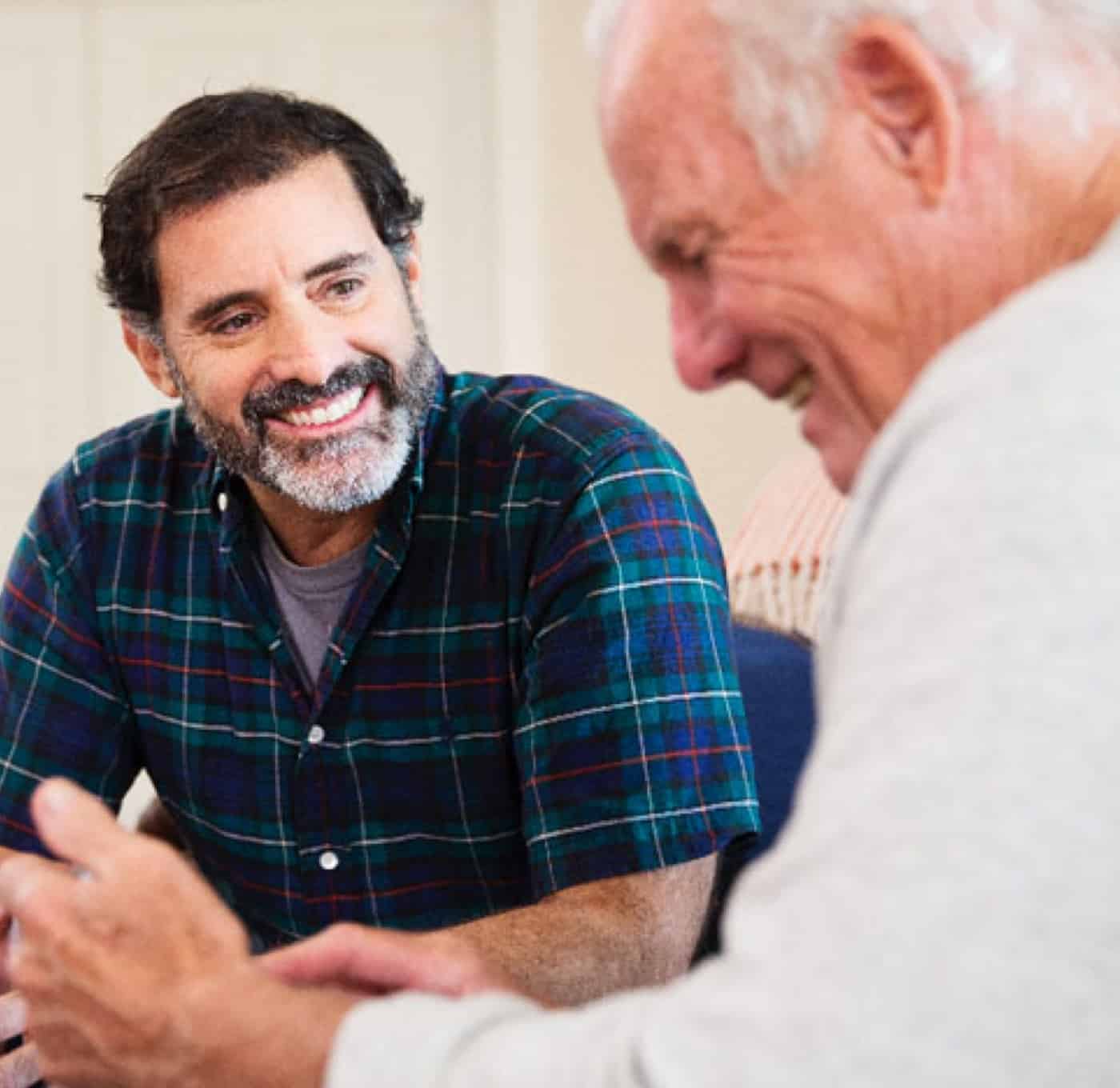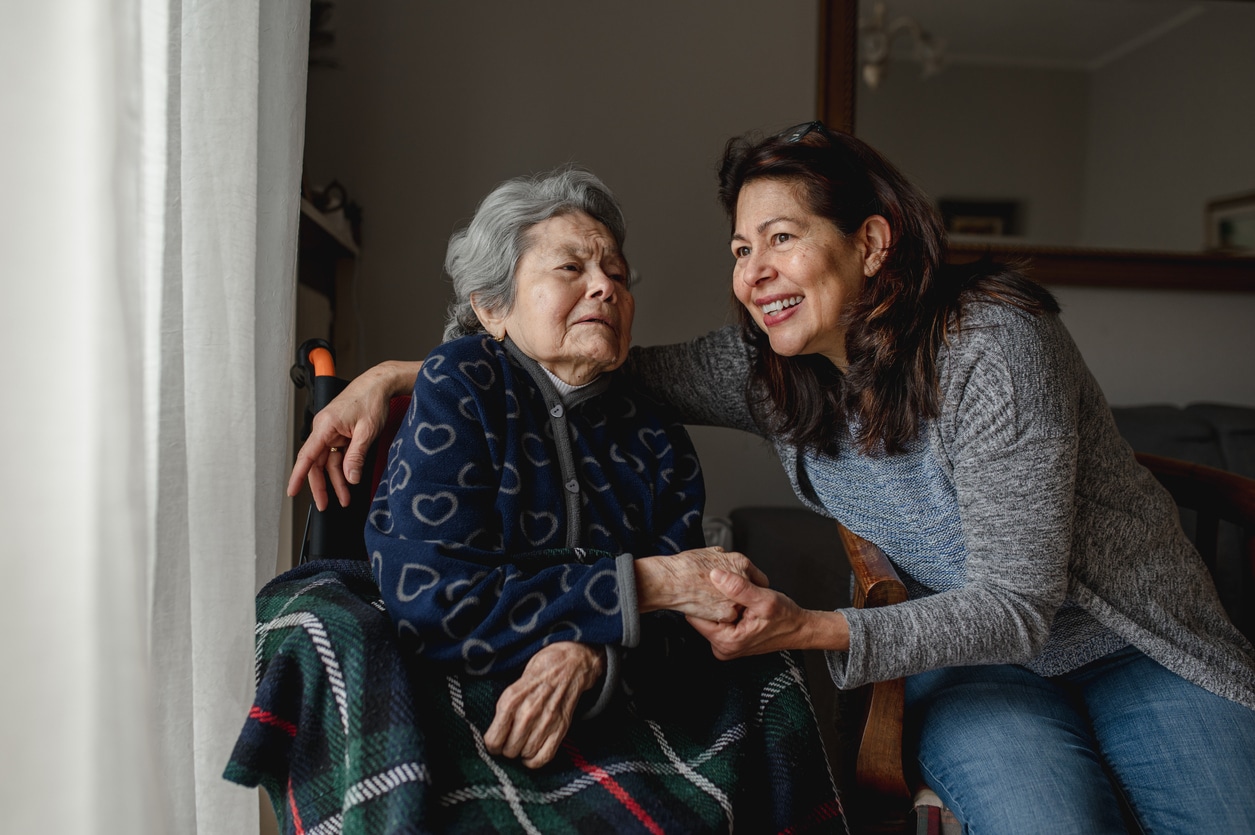“We do not stop exercising because we grow old,” suggested fitness guru Kenneth Cooper. “We grow old because we stop exercising.”
Not all of us are going to be Robert Marchand, the French cyclist setting records at age 105, but we don’t have to be. Staying active is the real win for senior men.
We asked some experts for their senior fitness tips. Let’s see what they say.
Older Adults Exercising: It’s Okay to Not Be 18 Anymore
Always, always, always see a doctor before starting a new fitness routine.
When our bodies change, our exercise changes, too. Understanding this makes exercising safer and more fun.
“By age 65, the average male only has about 65% of their cardiac output – their heart’s ability to pump oxygenated blood throughout the body,” explains John-Paul Rue, MD, who specializes in orthopedics and sports medicine in Glen Burnie, MD. “We also lose lung capacity, so it’s harder to get oxygen to that blood. Exercise is still important, but the level of intensity should be decreased as we age.
“Given that we have less ability to oxygenate blood and then pump that blood around our body to all of the tissues that need it, it’s important to make sure your heart and lungs are healthy enough to sustain exercise, or you could end up with other problems such as a heart attack or stroke,” he adds.
As we age, our flexibility, mobility and balance can falter, too. That’s why Butho Ncube, MPH, of the Birmingham, AL-based Fall Injury Prevention and Rehabilitation Center says, “Older adults need to engage in exercises that improve functional ability, self-confidence, mobility, muscle strength, and coordination.”
Senior Exercise & Fitness: Avoid Exercise Mistakes
Where there’s a gym, there are people making mistakes. Here are 4 common errors made by senior men when exercising:
1. Using Bad Form
“If you’re not performing exercises correctly, you’re going to feel knee pain, or hip pain, or back pain,” says Dani Singer, fitness director at Fit2Go Personal Training in Baltimore, MD. That can make you less likely to exercise, or worse, increase your likelihood of falling. See a personal trainer for a quick form check. “Seniors can be shocked at how strong and young they feel once they’re exercising with proper form.”
2. Letting Your Ego Win
“Seniors sometimes overexert themselves,” says Ncube, “and try to show off their abilities in group settings.” It’s tempting to compete, but that’s not always in your own best interest – and nothing says out of shape like wheezing on the sidelines. “Know your fitness abilities. Increase the frequency and intensity of physical activity as fitness abilities increase.”
3. Skipping the Weights
“Strength training is one of the most important things senior men can do to reduce the loss of muscle mass and bone density,” Singer notes. Before starting, though, consult a professional to determine the best set of exercises for you, optimal weight and reps, and proper form.
4. Injuring Soft Tissues
“Muscle strains or tears are common,” says Rue, “particularly in the shoulder and knee. Rotator cuff injuries are frequent in men who continue to lift heavy weights, or use improper form when doing upper body exercises. Injuries to the quadriceps tendon are common, particular with squatting or jumping exercises. The key to avoiding these injuries is to ensure proper form.”
Fitness Goals: Workouts for Older Adults
Try these exercises to address your specific fitness and lifestyle goals:
To improve mobility:
Ncube suggests this simple exercise: Stand up straight, facing a wall. Place your hands on the wall for support. Then, rock forward slowly onto your toes, coming into a tip-toe position. Slowly rock back onto your heels, lifting your toes off the ground. Repeat this 10 times, always holding the wall for balance.
Bonus Tip: Singer says squats are also great for improving the ability to get around.
To reduce the likelihood of falls:
Work on your balance. “Range-of-motion exercises can help maintain normal joint function by increasing and preserving joint mobility and flexibility,” Ncube says. For example: With one foot grounded and the knee slightly flexed, move the body slowly through a running action while maintaining balance.
Bonus Tip: Singer says you can start by standing on one leg. Once you’ve got that down, ramp up the difficulty.
To protect joints and build strength:
Do more resistance training, including weightlifting. In addition to combatting the natural muscle mass and bone loss that comes with aging, resistance training strengthens joints and soft tissue. “Strong muscles help keep weak joints stable and comfortable and protect them against further damage,” Ncube says. “In lifting weights, less is more,” he notes. “Seniors should lift comfortable weights for no more than 30 minutes a day.”
To safeguard your heart:
Build stamina. “Endurance training is any activity that increases the heart rate for a prolonged period of time, such as walking, swimming, low-impact aerobic dance, and biking,” Ncube explains.
Bonus Tip: “[Seniors] don’t need to do intense sprints,” Singer adds. “Just getting 30 minutes of activity every day, they’re using their hearts.”
To avoid injury:
Pay attention. Don’t push yourself too hard. “Listen to your body,” Rue counsels. “Aches and pains associated with a good workout are one thing, but sharp pain with swelling or weakness is generally indicative of a true injury.”
To improve flexibility:
Try yoga. “The routines included in yoga are beneficial for seniors,” says Ncube. “They help with flexibility, balance, and muscle strength, all of which can help reduce falls.” Of course, but all those things also boost your performance on the bike, the trail or in the pool.
Bonus Tip: “It’s good for stress relief and getting in tune with your body,” Singer adds. “Yoga can be a good tool to work on that mind-body connection, and being more aware of your body position overall.”
To recover faster:
Combine strength training and protein. “This is a really important piece that a lot of senior males don’t know,” Singer says. “The best way to combat losing the muscle mass, losing bone density, is to strength train and to consume adequate protein. Ncube adds, “Gentle stretching is a simple and fast way to help muscles recover fast.”
Do More: Exercise for Older Adult Men
Already active and looking to up your game and better your performance? Ncube offers these ideas:
Running
Focus on posture and balance. “Hold a pair of dumbbells straight above your shoulders, with your arms straight and elbows locked. Step forward with your left leg, and lower your body until your front knee is bent 90 degrees. Return to the starting position, and repeat with your right leg.”
Bonus Tip: Singer likes the glute bridge to balance out the work between the front and back of the leg.
Swimming
Strengthen your upper body. Try seated independent free weight curls: “Sit at the end of a flat bench, or a seated utility bench with back support. Place your feet flat on the floor for stability, with your back upright, shoulders back and your chest out. Grab a dumbbell with each hand using an overhand grip, and let your arms hang down naturally at your sides with both palms facing inward toward the bench. Then, simultaneously curl the dumbbells up while twisting (supinating) your wrists upwards on the way up.”
Walking
Work muscles differently. “Walk backward on your heels with toes pointed straight. Keep the legs relatively straight and take fairly small steps. Maintain coordinated movement and erect posture.” Keep your feet and ankles flexed as much as possible.
Bonus Tip: Walking is great for mental health, too.
Cycling
Build upper-body strength for better control and pumping power. Ncube’s favorite: “Sitting with a slight bend in your knees, press your heels against the floor. Extend arms to the front at shoulder height, palms facing each other. With a straight spine and upward gaze, inhale deeply, then exhale and slowly lower your torso to the floor over five counts as you inhale. Arms are overhead. Then, in one smooth movement, leading with the arms, exhale and explode back to the starting position. Do 20 reps.”
Senior Fitness Tip: Listen to Your Body
Regardless of your fitness level and goals, here’s some basic advice for active senior men to follow before each work out:
- Talk to your physician before beginning or increasing your workouts.
- Drink plenty of water before, during, and after physical activity.
- Begin every workout with a warm-up and follow exercise with a cool-down.
- Rest with two to three days off a week to give the body a chance to recover, and to prevent injuries.
- Avoid exercises that cause pain, and listen to your body.
Following these tips carefully empowers you to move into the future healthy, strong, and feeling good.
See also: 14 Strength, Flexibility & Balance Exercises for Seniors
Don’t disregard professional medical advice, or delay seeking it, because of what you read here. This information is not intended as a substitute for professional consultation, diagnosis or treatment; it is provided “as is” without any representations or warranties, express or implied. Always consult a healthcare provider if you have specific questions about any medical matter, and seek professional attention immediately if you think you or someone in your care may be suffering from a healthcare condition.




